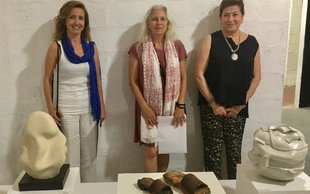
Taking Lebanese Ceramic Art to a Higher Place
Ceramics is getting more and more popular and this competition proved us...
The fields marked with * are mandatory
A Thrilling Chapter in Lebanon's Industrial and Intellectual History
Most Beirutis do not remember that there were open fields and groves in the areas of Achrafieh, Hôtel Dieu, Nasra, Mathaf, Badaro and beyond, a hundred years ago. At that time, a large property belonged to Charles Corm, a Lebanese industrialist, writer and philanthropist, born in 1894. He was the driving force behind the Phoenician movement that paved the way to Lebanese nationalism and independence in 1943. According to Corm’s son Hiram, most Beirutis suspect the Corm House to be a church or some devotional space…
Corm was only 18 years old and fresh out of Saint Joseph University (USJ), when he travelled to New York. There, he managed to get a meeting with Henry Ford, then the richest man in the world! This encounter was pivotal: he gained the Ford Motor Company dealership for the Levant and established the first and largest multinational in the Middle East, with headquarter in Beirut and branches in branches in Lebanon, Syria, Palestine, Transjordan, and Turkey (Beirut, Damascus, Aleppo, Tripoli, Latakia, Alexandretta, Jerusalem, Jaffa, Haifa, Amman, Homs, Zahle, Antioch, Tyre and more). Ford parts were shipped in wooden crates and assembled in Beirut and included customized Ford vehicles for the Lebanese Security Forces as well as agricultural machinery.
According to his granddaughter Carole, her grandfather built the ominous edifice situated opposite the French Grand Lycée in 1928, when he decided to move the headquarters for the Charles Corm & Cie - Société Générale Industrielle & Commerciale from Assour Square (near Arab Bank at Riad al Solh Square). He himself designed it with American skyscrapers in mind, which explains why it looks like a miniature of the Empire State Building.
While running the Ford concession, Corm travelled, setting up branches across the entire Middle East, often even building roads to make these branches more accessible and linking them together. According to his son Hiram, Corm would always have vehicles delivered by four employees so that they could, if necessary, lift the vehicle over rough terrain...
The building was the first to use reinforced concrete and though only 7 floors high, it was Beirut’s tallest until the late 1950s. It was like a lighthouse or landmark for people coming from the north, south or east with Damascus Road nearby.
In the 1930s, Corm dedicated himself to poetry and turned his offices and assembly plant into his home. It hosted many artists and poets and also boasted a phenomenal library with more than 40 000 books and periodicals, of which some, miraculously, have survived the civil war. So did correspondence between the Levantine headquarter and its branches and the American head office and advertisements in daily newspapers such as L’Orient.
Granted a visit of the house and property, I was taken around by Carole’s father Hiram. He showed me some of the incredible books and magazines that survived from the 1920s onwards. There was also rare Bauhaus furniture and art deco pieces and the garden complete with Egyptian columns and giant bamboo Hiram brought back from a trip to Vietnam.
On the ground floor there was a salon and bar. Pointing them out, Hiram laughed and said – “une maison sans bar est barbare”. It means, a house without a bar is barbaric.
The original garden was so large that, Hiram remembered, gazelles roaming around there when he was a child. It also housed an atelier for the local sculptor Youssef Howayek, a student of Rodin and creator of the first sculpture commissioned to be set up at Martyr’s Square (it is now at the entrance of the Sursock Museum).
Given that the house was located on the Green Line, facing the Museum, it suffered a great deal and was occupied by various militias during the civil war.
It was restored and now houses Hiram and his brother’s offices. One day, it will most likely be turned into a foundation, to preserve one of the most spectacular chapters of Lebanon’s industrialisation, as well as poetry and history of thought.
Art
Historical Attractions
Articles
Lebanon
Get updates on what's happening in Beirut, customise and review the content you want.
Sign up now! It's free!